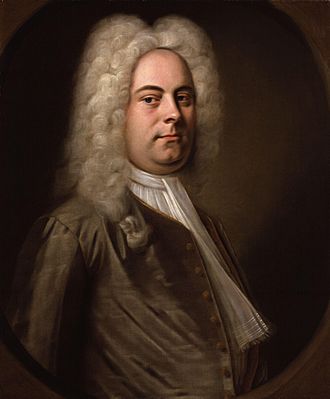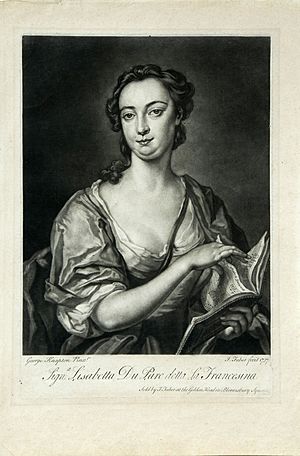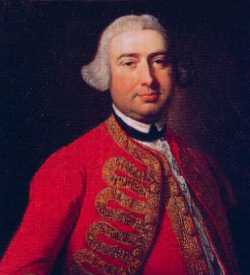Occasional Oratorio facts for kids

An Occasional Oratorio (HWV 62) is a special kind of musical work called an oratorio by the famous composer George Frideric Handel. It was written in 1746. Unlike most oratorios that tell a story, this one was created to be a strong, patriotic piece. It was meant to cheer people up and show support for the king during a difficult time.
Handel wrote this music when there was a big rebellion happening in Britain. This rebellion, called the Jacobite rising, was an attempt to remove King George II from the throne. The rebels wanted to bring back the Stuart family, led by Charles Edward Stuart, also known as "Bonnie Prince Charlie."
Contents
Why Handel Wrote This Music
A Time of Trouble in Britain
The Jacobite armies, mostly from Scotland, had marched into England. They reached as far as Derby before the King's army pushed them back. The King's army was led by his son, Prince William, Duke of Cumberland. By December 1745, the rebels were forced back to Scotland. The fighting paused because of the cold winter weather.
Creating the Oratorio Quickly
Handel composed An Occasional Oratorio very fast in January and February 1746. He even used some music he had written before and changed it around. The first performance happened quickly on February 14, 1746. It was performed at the Covent Garden Theatre in London.
Many talented singers performed in the first show. These included Willem de Fesch, Élisabeth Duparc, Elisabetta de Gambarini, John Beard (tenor), and Thomas Reinhold.
What the Oratorio is About
Music in Three Parts
The oratorio has 44 different musical pieces, called movements. These are divided into three main parts.
- Part One: This part generally talks about the sadness and difficulties of war. It also mentions the idea of a powerful God's anger.
- Part Two: This part focuses on the good things that come with peace. It celebrates the blessings of a calm time.
- Part Three: This final part is a song of thanks for victory. It celebrates winning the fight.
A Celebration Too Soon?
Some people at the time thought Handel's celebration of victory was a bit early. The rebels had not yet been completely defeated. Charles Jennens, a friend of Handel's who wrote words for other oratorios, called it "a triumph for a victory not yet gained."
Famous Parts of the Music
The oratorio starts with a grand four-part overture. This opening music includes trumpets and drums, making it sound very festive. Sometimes, just this overture is played by itself in concerts.
One famous chorus in the oratorio is "Prepare the Hymn." This is the 26th movement and is found in the second part. It's based on words from the Bible. Handel also reused some of his own music in this oratorio. For example, the second minuet from his famous Music for the Royal Fireworks was first used here. Also, the ending of the oratorio uses music from his well-known coronation anthem, Zadok the Priest.
Recordings of the Oratorio
You can listen to An Occasional Oratorio today through recordings.
- One recording from 2010 features Susan Gritton (soprano), Lisa Milne (soprano), James Bowman (countertenor), John Mark Ainsley (tenor), and Michael George (bass). It was performed by The King's Consort and conducted by Robert King.
- Another recording from 2017 includes Julia Doyle (soprano), Ben Johnson (tenor), and Peter Harvey (baritone). It was performed by the Chor des Bayerischen Rundfunks and the Akademie für Alte Musik Berlin, led by Howard Arman.
Images for kids




